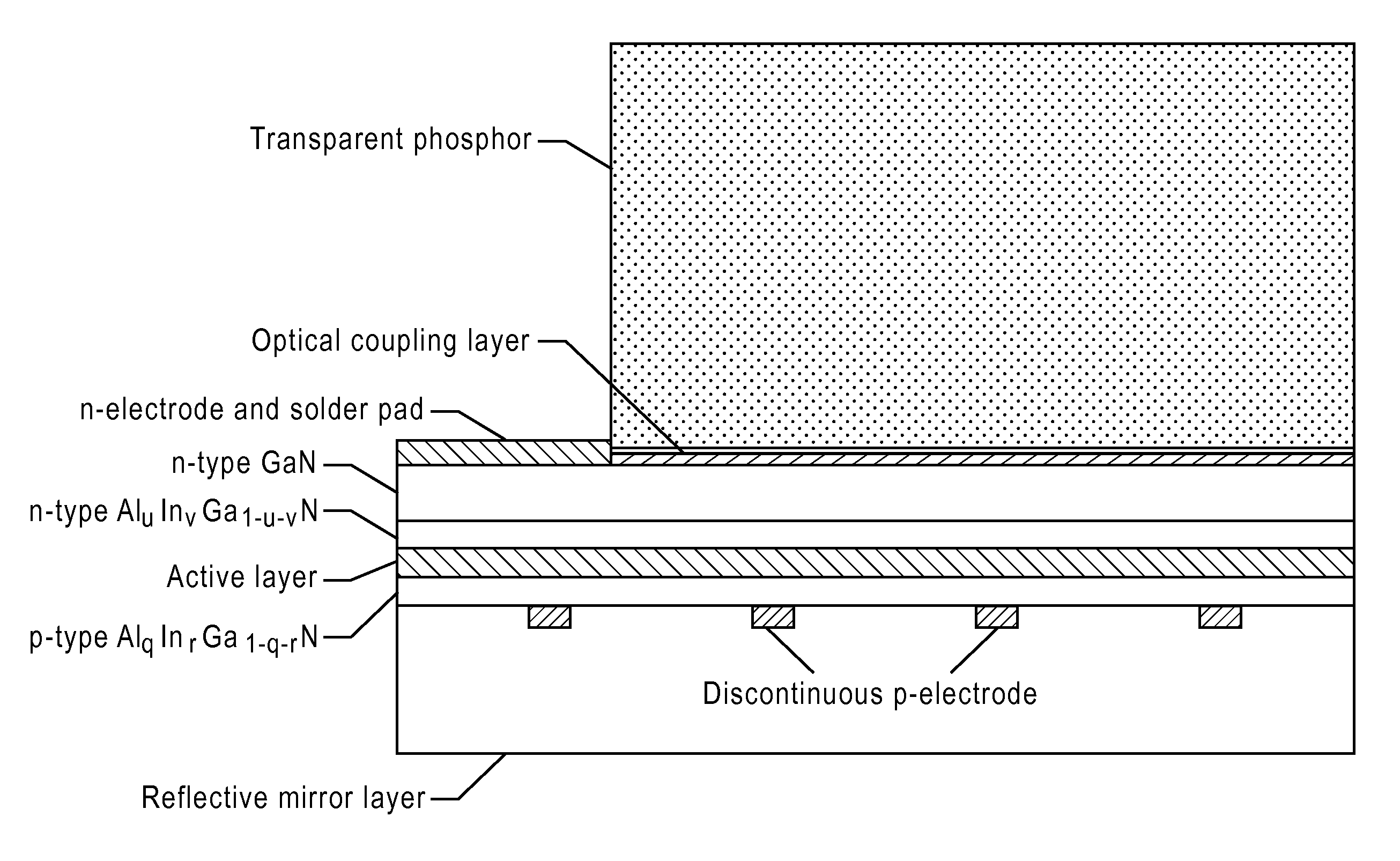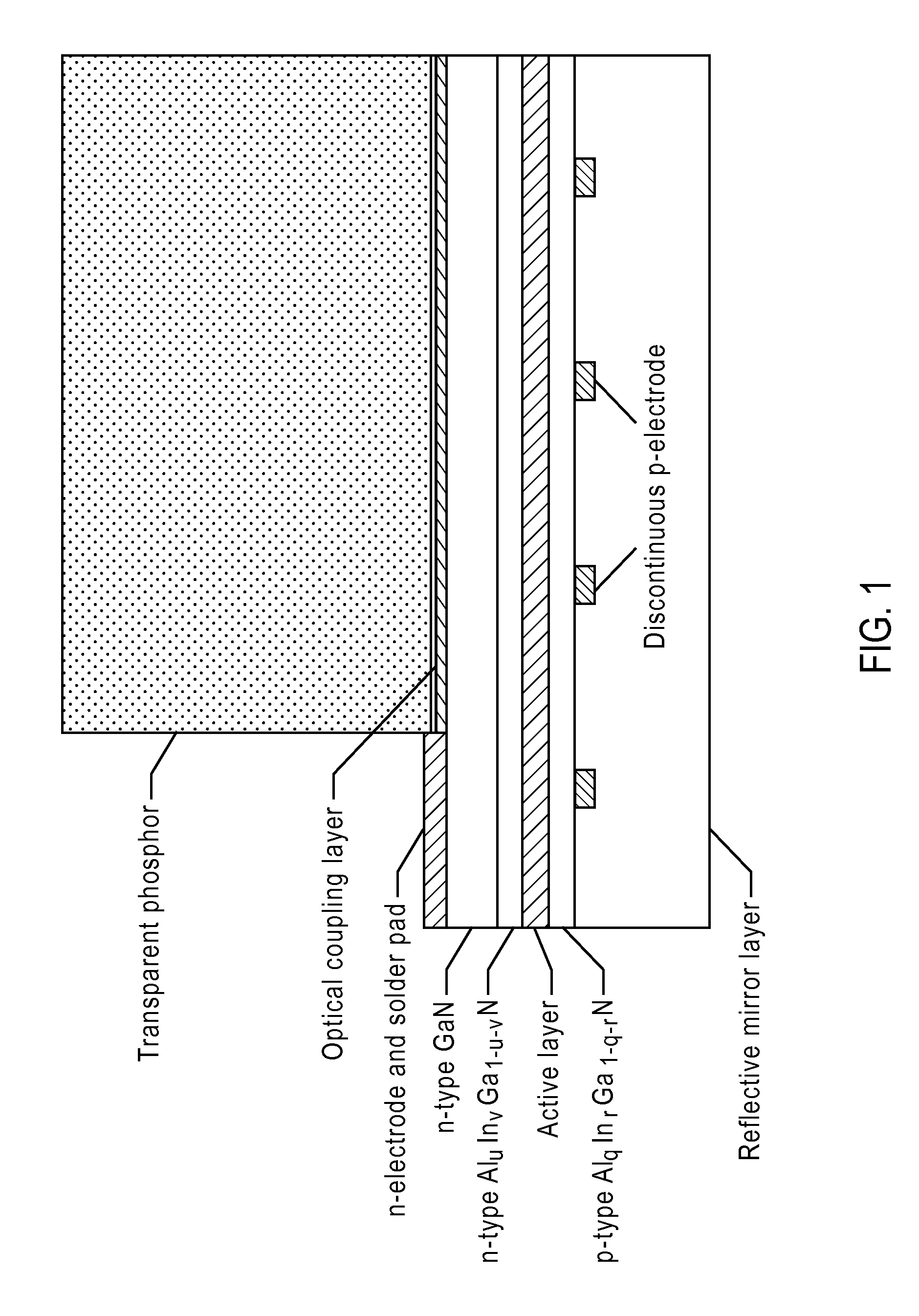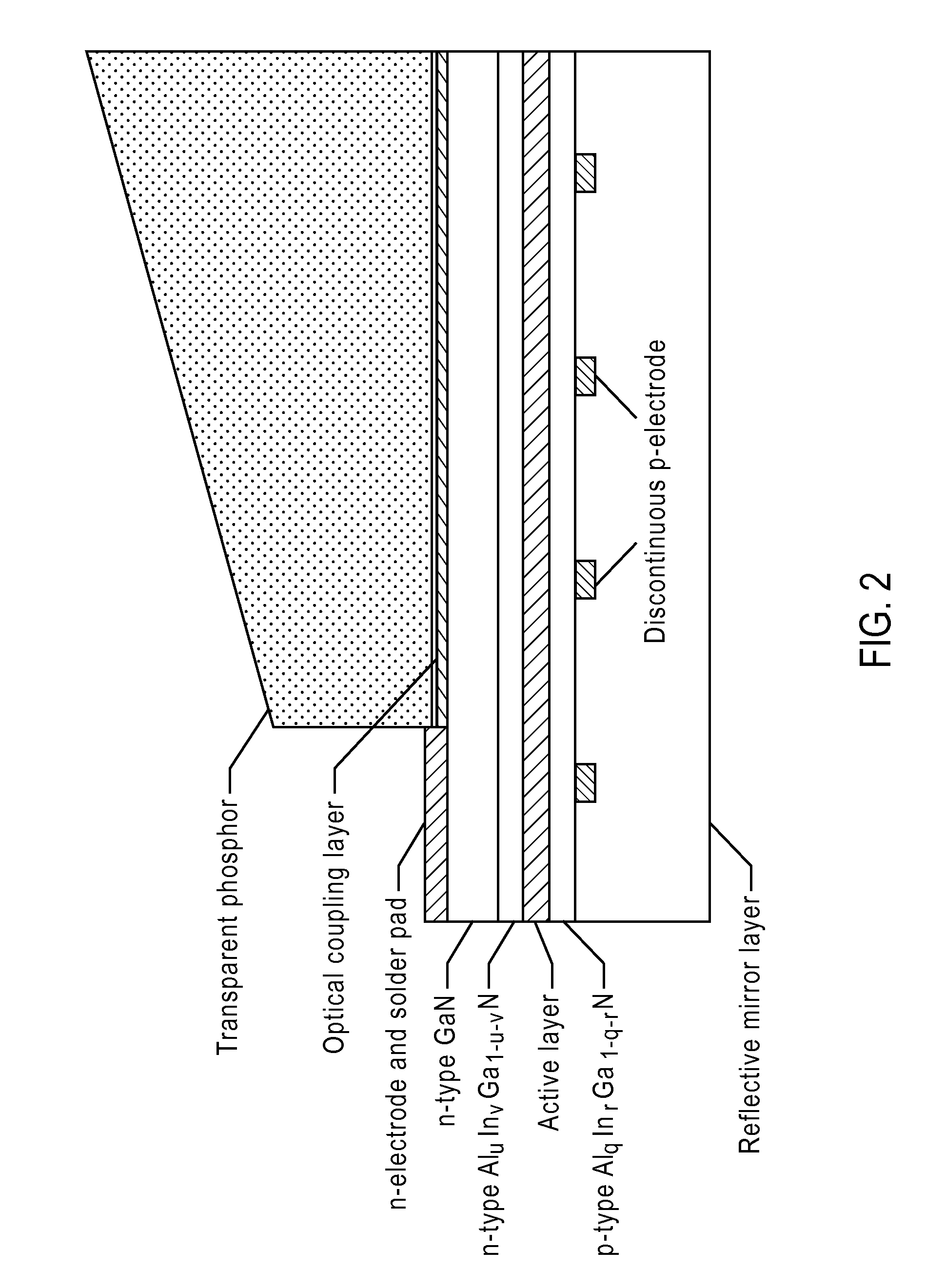Polarized white light devices using non-polar or semipolar gallium containing materials and transparent phosphors
a technology of non-polar or semi-polar gallium and white light, applied in the field of lighting techniques, can solve the problems of low efficiency, low efficiency, and low efficiency of conventional edison light bulbs, and achieve the effect of improving efficiency and being easy to implemen
- Summary
- Abstract
- Description
- Claims
- Application Information
AI Technical Summary
Benefits of technology
Problems solved by technology
Method used
Image
Examples
example 1
[0121]To prove the operation and method of the present invention, we performed experiments and provide these examples. These examples are illustrative and should not limit the scope of the claims herein. One of ordinary skill in the art would recognize other variations, modifications, and alternatives. In our example, metallic p-type contacts (Ni / Au / Ti / Au) were formed overlying the p-GaN contact layer of an LED device structure emitting electromagnetic radiation at a nominal wavelength of 450 nm, provided on a bulk non-polar GaN substrate. The LED device structure was generally conventional in design, although other device structures can be used according to other embodiments and / or examples. Next, 300 um×300 um LED mesas were then defined using a Cl2 based reactive ion etch. The backside of the substrate was then polished using a chemical-mechanical polishing process, resulting in an optically flat and transparent back surface. Metallic indium was then deposited in contact with the...
PUM
 Login to View More
Login to View More Abstract
Description
Claims
Application Information
 Login to View More
Login to View More - R&D
- Intellectual Property
- Life Sciences
- Materials
- Tech Scout
- Unparalleled Data Quality
- Higher Quality Content
- 60% Fewer Hallucinations
Browse by: Latest US Patents, China's latest patents, Technical Efficacy Thesaurus, Application Domain, Technology Topic, Popular Technical Reports.
© 2025 PatSnap. All rights reserved.Legal|Privacy policy|Modern Slavery Act Transparency Statement|Sitemap|About US| Contact US: help@patsnap.com



